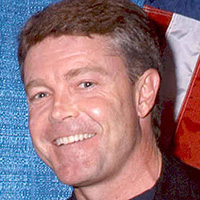During the late 1970s, Brian Lamb, then the Washington, D.C. Bureau Chief of an industry trade publication called "Cablevision," proposed a channel on the growing cable spectrum to provide gavel-to-gavel coverage and airing of the U.S. Congress in action. Though a handful of Congressional hearings had been televised as early as the Army-McCarthy Senate Hearings of 1954, the day-to-day business of law-making and the many 'non-business' functions of the U.S. House and U.S. Senate were largely shielded from public view.
Lamb came up with the concept, and with the help of an early cable TV pioneer Bob Rosencrans, and an initial investment of $25,000.00, in 1979, C-SPAN, the Cable-Satellite Public Affairs Network," was on the air. Then, and now, a private nonprofit organization, C-SPAN receives no government funding. The network has a staff of around 250, offering 24-hour coverage and programming across three different programmed networks. C-SPAN's focus is the U.S. House of Representatives. C-SPAN 2 covers the U.S. Senate, shifting weekend programming to American History on Saturdays and Book TV on Sundays. C-SPAN 3 covers congressional hearings, conferences and public events, campaigns, and press briefings, by the White House, as well as members of Congress.
C-SPAN is nonpartisan and attempts to be apolitical while providing more detail and nuance of how the Congressional legislative process works than any other news outlet on the planet. C-SPAN receives voluntary funding from the cable TV industry, in the form of payments for viewing household and per channel at a rate of roughly 10 cents per viewer, per channel, per month. These three networks are available on roughly 7,900 cable systems in 86 million U.S. households. Both of those latter two numbers are shrinking, as TV viewers cut their cables and move to streaming content. Cable penetration is now highest in rural and ex-urban areas without fiber or broadband available and high-speed internet as a result not being a realistic option.
C-SPAN, though perhaps lesser known than CNN (launched in Atlanta, GA on June 1, 1980), has continued to grow its programming and influence. Still, its greatest impact may be the copycat gavel-to-gavel coverage of numerous state legislatures as well as city and county governments across the United States. C-SPAN began coming into its audience and its own as newspaper readership and influence began its wane. C-SPAN's founder and longtime lead C-SPAN anchor, Brian Lamb, now 81, is still active as its Board Chairman.
C-SPAN has been around for all but the first 30 years of cable television, but as cable penetration declines, so do C-SPAN revenues, as the network also eschews advertising. And though the television news networks have in many ways adopted or followed the cable news network models in their programming, C-SPAN is the rare news bird that picks no side, and which has no obvious partisan tilt or agenda.
Congressman and later U.S. House Speaker Newt Gingrich was among the first to use C-SPAN as a megaphone for conservative thinking, giving speeches to a frequently empty House Chamber. C-SPAN's camera was trained only on the podium and speaker in the well. Gingrich didn't care if he was giving the remarks at 2 a.m., he knew they would eventually find their audience. This quickly became such an effective propaganda tool by the GOP for campaign fodder and propaganda, that then-House Speaker Tip O'Neil (D-Massachusetts), ordered that C-SPAN cameras also focus on the empty house floor seats during 'order of the day' speeches. This quickly became known as Camscam.
I say now, in C-SPAN's 45th year, they deserve a strong round of applause for the increased transparency of the inner workings of Congress. Though there are 12 SPANs covering legislatures in states that receive some degree of public funding, C-SPAN does not seek to become part of the Corporation for Public Broadcasting, nor to become captive to the funding whims of political bodies and office-holders, who frequently threaten PBS and its state affiliates with funding cuts tied to programming.
I still have access to C-SPAN content via YouTube.TV. Not certain whether or not YouTube is passing along anything similar to the 30 cents per month per C-SPAN channel, roughly $1 per month, that was coming to then from my cable provider. And though we all have more subscriptions than we probably need these days, I would be more than happy to be giving $10 per month (or more), to keep C-SPAN keeping on. It is time to start giving CSPAN a hand.









